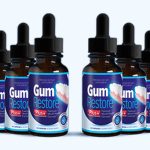Characteristics of Asthma
Asthma is a lung disease that is characterized by three airway problems: obstruction, inflammation and hyper responsiveness. Asthma requires continuous medical care.
According to the Guidelines for the Diagnosis and Management of Asthma report released from the National Asthma Education Program, asthma treatment has four components:
the use of objective measures of lung function (spirometry, peak flow expiratory flow rate) to assess the severity of asthma and to monitor the course of treatment;
medication therapy designed to reverse and prevent the airway inflammation component of asthma as well as to treat airway narrowing;
environmental control measures to avoid or eliminate factors that induce or trigger asthma flare-ups, including consideration of immunotherapy;
patient education that includes a partnership among the patient, his or her family, and the physician.
According to the Guidelines, there are five goals for the effective management of asthma:
- Maintain (near) optimal pulmonary function rates;
- Maintain normal activity levels, including exercise;
- Prevent chronic and troublesome symptoms (e.g., coughing or breathlessness in the night, in the early morning, or after exertion);
- Prevent recurrent asthma flare-ups;
- Avoid adverse effects from asthma medications.
- Proper medications and dosages are important to the management of asthma. These medications include anti-inflammatory agents and bronchodilators.
Anti-Inflammatory Agents
Anti-inflammatory agents prevent or stop the further development of inflammation in the lungs. Following are some common anti-inflammatory agents:
Corticosteroids: Corticosteroids are the most effective anti-inflammatory medications for the treatment of asthma. Corticosteroids can be administered orally or in an inhaled form. Sometimes the oral form is used for a short period of time when the patient's asthma is out of control. Possible side effects include weight gain, high blood pressure, cataracts, weakening of bones, muscle weakness, and swelling. Inhaled corticosteroids are safe and effective for the treatment of asthma. Because this medication works on the inflammatory aspect of asthma, it is used as the primary medication for moderate and severe asthma. Possible side effects include oral candidiasis and occasional coughing caused by the aerosol device.
Cromolyn Sodium (Intal®) and Nedocromil (Tilade®): Cromolyn sodium and nedocromil are preventive medications that are inhaled directly into the lungs to prevent immediate as well as later symptoms, sometimes called the late phase. They work to stop the effects of environmental irritants or allergens (including after exercise, and after exposure to cold air and sulfur dioxide).
Cromolyn sodium comes in a powder form to be used with a spinhaler, a liquid form for a nebulizer machine, and in an inhaled form. There are few side effects.
Nedocromil comes in an inhaler form.
Other anti-inflammatory medications are being tested in clinical trials in the U.S., but are not yet approved for asthma treatment. They include antihistamines and ketotifen.
Leukotriene Inhibitors (Acculast®, Zyflo®, Singulair®) A new anti-inflammatory family of medications that inhibit the action of leukotrienes which are known to produce inflammation of the bronchial tubes in asthmatic attacks.
Bronchodilators
A Bronchodilators' main job is to open up the airways by relaxing the bronchial smooth muscles. The two types of bronchodilators are beta-adrenergic agonists (beta2 agonists) and methylxanthines (theophylline).
Beta2 Agonists (Ventolin®, Proventil®, Maxair®, and others): Beta2 agonists work to relax the airway smooth muscle and to aid in the control of persistent airway narrowing. They are adrenalin-like medications that can be taken orally through tablets or liquids, by inhalation or through injection. Injections are used primarily in emergency situations.
Inhaled beta2 agonists are the medication of choice for the treatment of acute flare-ups of asthma and for the prevention of exercise-induced asthma. Inhaled beta2 agonists are available in metered-dosed inhalers, dry-powder capsules and compressor-driven nebulizers.
Methylxanthines (Theo-Dur®, Uniphyl®, and others): Theophylline is the major methylxanthine used in asthma therapy. It serves as a mild-to-moderate bronchodilator. The sustained release formula is useful in controlling nighttime asthma. It is sometimes used with inhaled beta2 agonists to provide additional bronchodilation. It also may help to reduce muscle fatigue and has some anti-inflammatory benefits. Possible side effects include abdominal pain, nausea, vomiting, nervousness, and insomnia.
Immunotherapy
Immunotherapy involves injecting small amounts of allergens to create a tolerance or resistance to allergens that trigger asthma flare-ups. Concentrations of the allergens are increased over time to reduce or eliminate the patient's allergy symptoms.
Environmental Issues
Between 75% and 85% of patients with asthma also have allergies. This fact reinforces the concept that controlling allergies benefits allergic asthmatics. To prevent allergic reactions, environmental control measures to reduce exposure to indoor and outdoor allergens and irritants are essential.
Avoid Outdoor Allergens
Reduce your exposure to outdoor allergens by staying indoors when the pollen count or humidity is high and on windy days when dust and pollen are whipped about. Minimize early morning activity when pollen is most often emitted. Keep your windows closed, especially at night and use air conditioning, which cleans, cools and dries the air.
Eliminate Indoor Allergens
House Dust Components: House dust itself is not an allergen, but the components of house dust can cause allergic reactions. House dust can be comprised of animal allergens (if allergic, remove all warm-blooded animals from the home), house dust mites (found in mattresses, pillows, carpets, upholstered furniture, bed covers, clothes and soft toys), and cockroach allergens (roach control benefits asthma patients).
Indoor Molds: Indoor molds can be found in bathrooms, basements, kitchens, and other areas where high humidity is present. Allow adequate ventilation and frequently clean these areas. Dehumidifiers should be set for less than 50 percent, but above 25 percent.
Air Controlling Devices: There are several indoor devices that help to control indoor allergens. These include air conditioning, indoor air cleaning units, humidifiers, and vacuum cleaners. Indoor air-cleaning devices may be useful, but even more important is controlling the source of allergens. The high-efficiency particulate air (HEPA) filter is the most effective filter and can be used within central heating and cooling systems or free-standing units.
Vacuum cleaners can spread allergens during use, so allergic patients should wear a dust mask when vacuuming. Some homes with central vacuums have a collecting bag outdoors. Several vacuum brands can be fitted with a HEPA filter.
Humidifiers are great sources for mold growth when not cleaned properly. Setting the humidity level too high can encourage mold growth. Set the unit level to between 25 and 50 percent humidity.
Other Indoor Irritants: There are other irritants that can cause flare-ups in the patient with asthma. These include tobacco smoke, smoke from wood burning stoves, strong odors, sprays, and air pollutants, including ozone and sulfur dioxide.
Thanks to:
Principal Health Care of Florida, Inc.,
Glaxo Inc.,
The American Academy of Allergy and Immunology.









